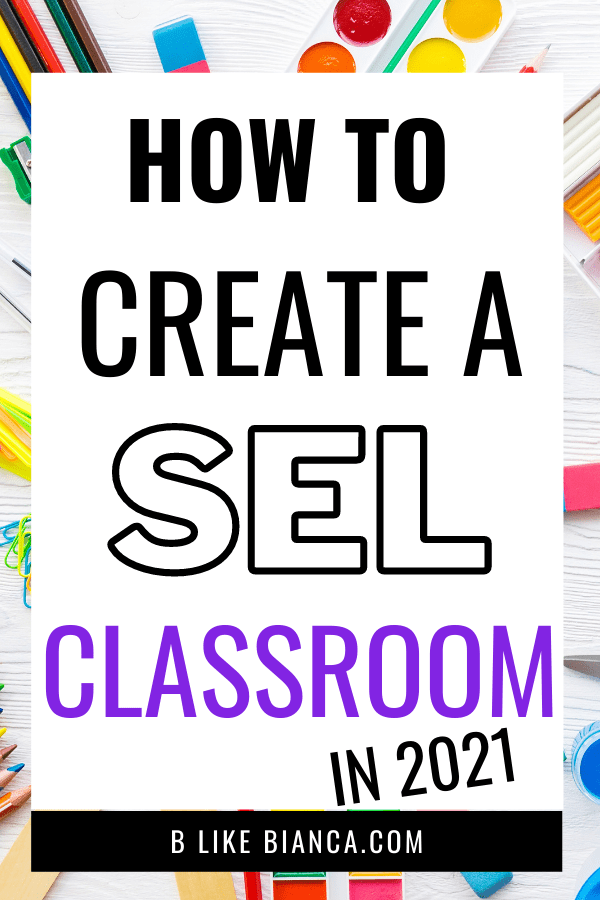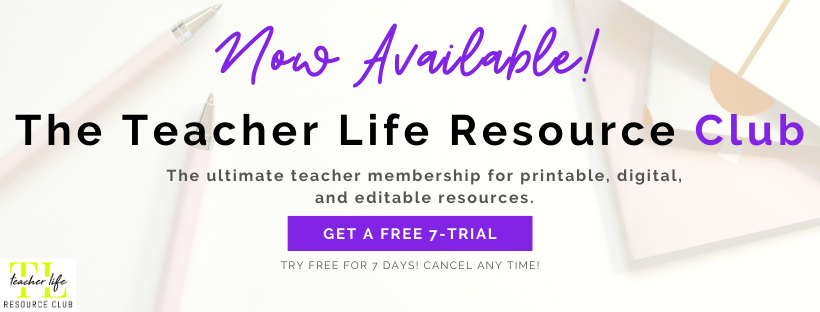Social and emotional learning (SEL) is not just a buzz word in the K-12 environment. In the special education field it’s been apart of the curriculum (or at least should have) for quite sometimes. Social and emotional learning is needed in schools to promote student success in an the educational setting in a variety of capacities, everyday.
What is Social Emotional Learning (SEL)
Social emotional learning is the learned process that effectively helps students and even adults manage emotional and social skills through self-monitoring, self-managing, and reflection. It helps students to self-manage and self-regulate current and future social skills and personal emotional needs.

Why is Social Emotional Learning Important
Students who receive social and emotional learning usually have:
- An increased motivation to learn
- Use positive behavior skills
- Overall attain higher level of academic engagement and achievement.
Today, teachers need to be able to apply social and emotional learning strategies to promote a natural well-being of positivity, because students not only learn about their peers socially, but about themselves and their own attitudes towards situations. This will help students build a commitment of self-efficacy while reducing negative behaviors and garners toward building positive connections with peers and adults.
How to Use Social Emotion Learning in the Classroom
As you reflect on your own teaching methods it’s easy to incorporate strategies that are not time consuming or disrupt the learning environment. One simple strategy that I started while teaching during the pandemic is having students check-in with a Google Form.
I created a daily attendance Google “How are you doing today?” Form, where students scale their emotion to start the day. It is quick and easy while helping me with attendance at the same time!
One of the biggest things about using social and emotional strategies daily in your classroom is the self-monitoring advocacy skills students can gain. The scale I created covers a variety of emotions that students are required to choose prior to the start of class. At the bottom of the form, there is a final question that asks, “Is there anything you want me to know about how are you feeling today?” This is great because students can expand and reflect on their current emotions and I can follow up and check-in with them.
For younger students, you can easily use pictures like the one below and use number systems. Many resource room classroom already have these types of scales to monitor social and emotional skills!
Another strategy for students to self-monitor, self-regulate, and self-manage is using reflection forms or having a “refocus table” in the back of the classroom. Many times, when students emotions or running high, they may just need a different space to be in. It could be a simple move to the refocus table or a calm down seat. Students can write, draw, or just have a place of solitude, even having headphones and calming music can do the trick.
Top Social Emotional Learning Activity
An activity that I think is the top social emotional learning activity is self-awareness reflective writing. Reflective writing shows growth, builds compassion, and builds empathy. Giving students the opportunity to self-reflect with writing prompts or free writes allows students to voice every concern, have open opinions about various subjects and situations, and gives students a voice when at times they feel shut down.
I also differentiate with choice of reflective writing as in students can draw, or color, write poems, stories, or create comics. This process helps students contemplate on their own thoughts and feelings and build self-awareness and self-management skills at the same time.
How Do You Teach Social Emotional Skills
One strategy that is quick and most teachers do, especially for secondary students is sending them to the hallway, or removing just removing them from the classroom. I’m guilty of this too, but I’ve found out that this strategy does not promote social and emotional development of students.
Social and emotional learning begins on day one – the first day of school. Students need a chance to self-monitor, self-regulate, and self-manage and if they are taught these skills daily from day one, possible meltdown of emotions that affect the entire class will most likely not happen.
This also means that you as a teacher are practicing building relationships with students daily as well. The point here is to locate the cause of disruption, which can be a variety of any one thing and a student’s behavior could be a secondary issue to the reason.
You want to practice social and emotional developments to you the teacher can de-escalate with the student with the trust that has been building over time. And always remember, before students are sent anywhere outside of the learning environment of the classroom, there needs to be a plan in place. The plan is to reinforce the social emotional learning strategies so students can self-monitor their own behavior and social situations.
Furthermore, the use of a refocus form to guide conversations with your students has encouraged social and emotional development. For example, when students are sent to the hallway, it might quickly deescalate a situation but can also make a student who needs extra support feel isolated.
The refocus form is a reflection plan in place for the student to self-monitor his or her own behavior will bring awareness to caused disruption. This especially works well if the caused disruption is academic related, social related, or possibly something that has nothing to do with the school environment. Teachers can pinpoint the cause of disruptions so next time the student can communicate through reflection and refocus while giving the opportunity to correct their behavior and the teacher can assist them through this development of their social and emotional learning.
Social Emotional Awareness as a Teacher + Final Thoughts
Behavior is always telling educators a story; however, most don’t want to listen. If we as educators don’t practice our own personal social and emotional learning, then it is going to be difficult to assist when students need help with their own emotions.
Having self-awareness and self-management help me to regulate my own emotions, especially working in a such a focused work environment. I practice reflective writing in journals and discuss with students the reflective journeys where writing can take you. This really helps with building relationships skills because I model activities with them and together, we make meaningful connections. We get to know each other better and build trust and our ability of social awareness grows. Finally, using responsible decision-making because I can determine what is best for students in terms of not just behavior but academic placement because of the connections and building of relationships that we did together throughout the social and emotional learning process.
What are some ways you teach social and emotional learning in the classroom? Comment below!
For more tips on teaching social emotional skills, click here!





1 Comment on How to Create your Social Emotional Learning Classroom